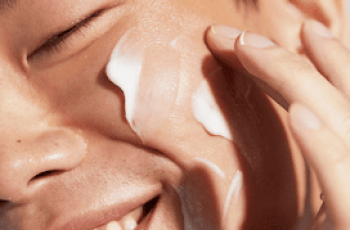
Eczema
What is Eczema?
Is your skin dry, cracked and itchy? Is your skin so dry and sensitive that it is getting thicker in the places you have been scratching? If so, then you may have eczema – a common dry skin disease that tends to appear on the hands, behind the elbows (called the antecubital fossa) and behind the knees.
If you suffer from severely dry skin, you know that the itching and irritation of eczema can really impact on your confidence and quality of life. Have you ever noticed that your skin inches more at night? That is a common symptom of eczema. Using an eczema cream or a soothing oil at night and taking an antihistamine like diphenhydramine can help you get a good night’s sleep.
Here we review the causes of eczema, and the role of the skin barrier in this skin disease.
What is eczema?
Eczema vs Atopic Dermatitis
Eczema is also called atopic dermatitis. They are different names for the same skin disease, The word ‘dermatitis’ basically means ‘skin irritation’ or “skin inflammation.”
Eczema is caused by an impaired skin barrier that leads to dry skin and inflammation.
Eczema is a chronic, long-term condition that tends to come back. It is usually genetic but can be acquired.
If you have eczema, or think you have eczema, then be sure to schedule a consultation with your dermatologist because there are many new eczema prescription medications on the market that your doctor can prescribe for you. Y
ou can combine these eczema medications with eczema creams to soothe and calm irritated skin.
What’s the Difference Between Eczema and Dry Skin?
Dry skin is the most common symptom of eczema, but it is possible to have dry skin without having eczema. Eczema is a skin disease – you cannot have eczema without having dry skin.
What causes eczema?
Skin Diseases That Get Confused with Eczema
Many patient come into my dermatology practice in Miami thinking they have eczema, but many times they actually do not have eczema at all.
These are the skin diseases that get confused often with eczema (also called the differential diagnosis):
Allergic contact dermatitis
Simple dry skin
Fungal infection
Hives
Irritant dermatitis
Perioral dermatitis
Psoriasis
Seborrheic dermatitis
Tinea corporis (Ringworm)
Tinea versicolor
A dermatologist can easily tell which skin disease you have. When deciding between eczema vs psoriasis we look where the rash is. For example, eczema causes an inner elbow rash while psoriasis occurs on the elbow. Eczema is behind the knees and elbows while psoriasis is on the bony part of the knees and elbows.
We also listen closely to the history of the rash. If you tried a new laundry detergent before the rash began, it is probably a skin allergy.
The shape and feel of the skin lesions are give clues. Hives are smooth and feel swollen like large blisters but do not have rough skin on the top.
To diagnose a fungal infection we can look under a microscope or send a fungal culture to the lab.
What causes eczema?
The impaired skin barrier seen in eczema can be caused by using the wrong skin care products, over exfoliating, prolonged submersion in chlorinated water, very dry climates, and frequent use of irritating soap.
Some cases of eczema are caused by a genetic deficiency of filaggrin – a skin protein that plays an essential role in the outermost layer of the skin’s surface (the epidermis).
The epidermis is the skin’s natural barrier that helps to prevent moisture loss and protect the body from bacteria or allergens (e.g. pollen or dust mites). If this skin barrier is impaired, then skin diseases like eczema can be the result.
What is the skin barrier
What is the skin barrier?
The skin barrier is an essential structure on the surface of the skin that has an impact on the skin’s ability to hold moisture, and prevent attack from allergens, irritants and bacteria. By doing so, it protects the other layers of the skin and cells in the body.
The skin barrier is located in the stratum corneum, on the top layer of the epidermis, and is composed of keratinocyte cells and fine layers of lipids that stack between the skin cells to protect them and make them water tight.
A properly functioning skin barrier is essential for your skin’s overall health and appearance, but when the skin barrier is damaged or impaired it can lead to something known as transepidermal water loss (TEWL). In addition, bacteria and allergens can also easily enter the lower surfaces of the skin when the skin barrier is impaired, which can lead to additional skin complaints.
This impairment of the skin barrier is the primary issue in eczema, but using an appropriate eczema cream will help to restore the skin barrier and ease the symptoms of eczema.
Is Eczema Contagious?
Eczema in itself is not contagious. You cannot catch eczema by touching someone who has it. However, it’s worth noting that eczema-prone skin can often become infected with bacteria, and these bacterial infections can be contagious. To mitigate the risk of bacterial infection on eczematous skin, using soaps with chlorine, topical antibiotics, or silver sprays can be beneficial, as these can help reduce bacteria on the skin and prevent further infection.
Types of Infections that Eczematous Skin Is More Likely To Get
Bacterial Infections in Eczema
Eczematous skin can provide an environment conducive to bacterial colonization due to its compromised barrier function. Among the various types of bacteria, the following are most likely to colonize eczematous skin:
Staphylococcus aureus (S. aureus): This is the most common bacteria associated with eczema. It’s estimated that a significant majority of people with atopic dermatitis (a type of eczema) are colonized with S. aureus, even when there are no visible signs of infection. This bacterium can exacerbate skin inflammation and can sometimes lead to impetigo, a contagious skin infection.
Streptococcus pyogenes: This bacterium is less common than S. aureus but can still colonize eczematous skin, leading to secondary infections.
Pseudomonas aeruginosa and other gram-negative bacteria: These bacteria are less commonly associated with eczema but can become problematic, particularly in individuals with chronic, open skin lesions or those who are immunocompromised.
Maintaining a proper skin care regimen, including the regular use of moisturizers and appropriate treatments, can help restore the skin’s barrier function and reduce the risk of bacterial colonization and secondary infections.
Viral Infections in Eczema
Eczematous skin can be more susceptible not only to bacterial infections but also to certain viral infections. A prime example is the herpes simplex virus (HSV), which causes cold sores and genital herpes.
When someone with eczema becomes infected with HSV, it can lead to a severe and widespread herpes infection known as “eczema herpeticum.” The condition is characterized by numerous painful and itchy blisters that can spread across areas affected by eczema, and even to areas where the skin is healthy. This condition requires immediate medical attention.
People with eczema should be cautious and avoid direct contact with cold sores or any other skin conditions caused by the herpes virus. If an individual with eczema suspects that they might have eczema herpeticum, it’s crucial to seek medical care immediately. Early diagnosis and treatment, which usually involves antiviral medications, can help manage the condition and prevent complications.
Fungal Infections in Eczema
Individuals with eczema are more susceptible to certain fungal infections due to the compromised skin barrier and the altered immune responses associated with the condition.
People with eczema may be more prone to infections caused by the Candida species, which can lead to conditions like candidiasis. Candidiasis can manifest as red, itchy rashes, often accompanied by blistering, oozing, or scaling. The moist and damaged skin associated with eczema can provide an ideal environment for this yeast to multiply.
Another fungal organism that can affect those with eczema is the Malassezia species. While Malassezia is a normal inhabitant of the skin, it can sometimes proliferate in individuals with eczema, leading to conditions such as seborrheic dermatitis. This condition often presents as scaly, itchy, and red patches, particularly on the scalp, face, and trunk.
For those with eczema, maintaining the skin’s integrity and barrier function through regular moisturizing and appropriate treatments can reduce the risk of both bacterial and fungal colonization and subsequent infections. If fungal infections are suspected, antifungal treatments should be considered under the guidance of a healthcare professional.
In Summary
Eczema is a common skin disease that causes dry skin, itching and redness, caused by an impairment in the skin barrier. It is a chronic, long-term condition, but use of a barrier repair cream can ease the symptoms. The best barrier repair creams show a maltese cross pattern when viewed under a microscope.


